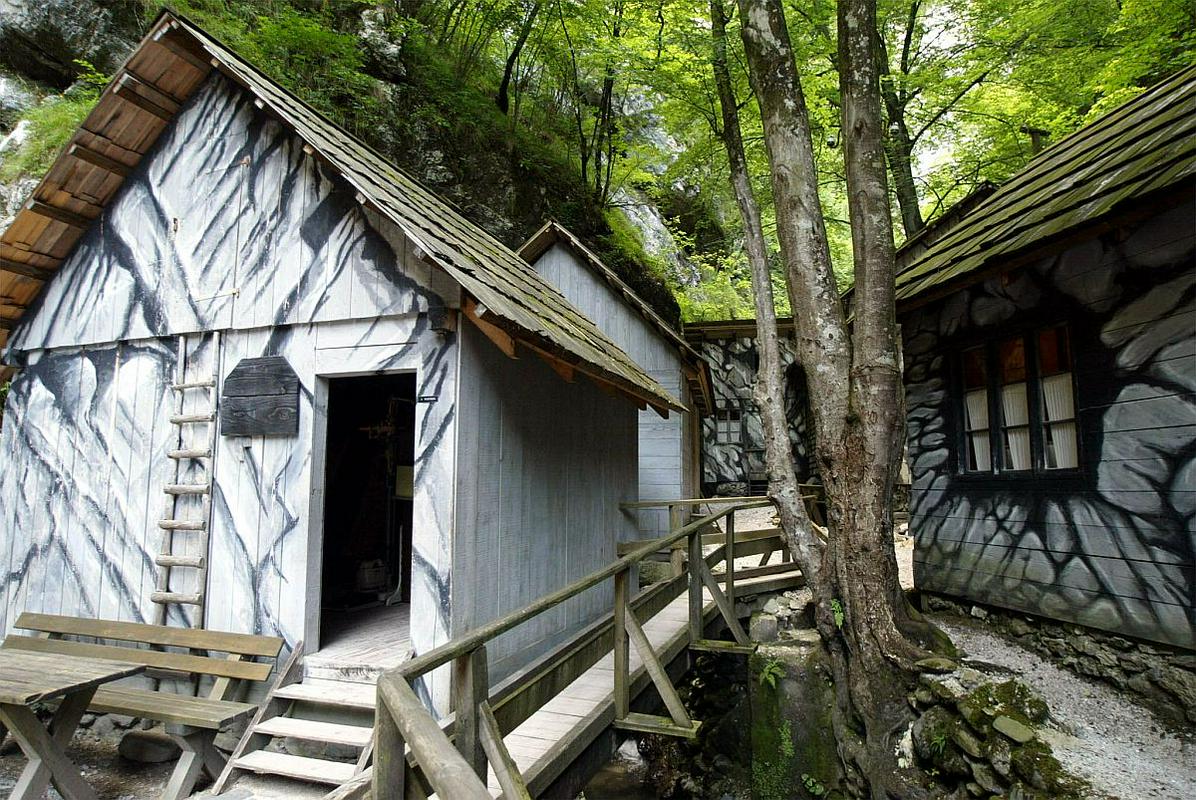
Almost invisible to those who don’t expect it, an unusual group of wooden buildings lies nestled in a narrow river gorge near the town of Cerkno western Slovenia. They resemble mere shacks at first glance, but the buildings actually comprise one of the unique hospitals ever built.
After World War II broke out, Slovenia’s resistance fighters, known as the Partisans, took to the forests in a guerilla campaign against the Axis forces, who had divided up Slovenian territory among themselves. The Partisans built various makeshift military facilities, but they also built several hospitals. The hospital near Cerkno, later known as the Franja Partisan Hospital, was the largest.
When the Partisans, with the help of the local population, built the hospital in 1943, just after Italy’s surrender, they chose to place it in a narrow river gorge surrounded by thick forests. It was located deep in the German-occupied part of Slovenia, and only its remoteness could keep it from being discovered by the Germans.
Fourteen buildings in total comprised the hospital. Almost 1000 injured soldiers were treated at Franja and nearby facilities before the end of the war – and about 500 of the wounded had severe injuries. It wasn’t just Slovenian soldiers who received treatment there, but also the wounded from other allied nations and, on some occasions, enemy powers as well. Nowhere else in Europe were so many wounded soldiers from different nations treated during World War II as at Franja. In fact, the American Association of Air Force Veterans officially recognized the hospital in 1997 for saving an American pilot’s life.
The medical equipment was better than at most other makeshift hospitals, but it was still very rudimentary by today’s standards. Amputations were sometimes performed without anesthesia. Even sterilization was basic; the medical instruments were often disinfected with steam alone. Still, the mortality rate was surprisingly low – around ten percent.
Throughout its existence, the hospital managed to keep its patients supplied with both life-saving medicine and food. A generator was used to provide electricity and eventually even powered an X-ray machine that was brought in to assist the medical staff. The hospital soon earned a reputation for the humane treatment of the patients.
For most of its existence, the hospital was headed by a woman doctor, Franja Bojc Bidovec, after whom the facility was eventually named. In fact, women comprised 20 percent of the hospital’s staff. (Bojc Bidovec continued her medical career after the war, became a leading gynecologist, and died in 1985.)
Throughout its existence, the Franja Partisan Hospital was successful in evading notice of the German forces. The hospital, almost entirely obscured from the air by thick foliage, was protected from the ground by a mountain stream. Access was only possible by crossing a drawbridge that could be quickly raised if enemy forces came too close. Just in case, all of the wounded were transported to the hospital blindfolded to prevent them from ever giving out the hospital’s location. Even though some German troops came close to the hospital on at least two occasions, it was never discovered.
After the war, the Franja Partisan Hospital was turned into a museum, but a flash flood in 2007 nearly destroyed it. Most of the buildings, along with precious medical artefacts, were washed away by the raging waters. However, some historic items were recovered and all the buildings were rebuilt. Today, the hospital – a symbol of humanity in the midst of brutal warfare – is a candidate for UNESCO’s World Heritage list.

































































